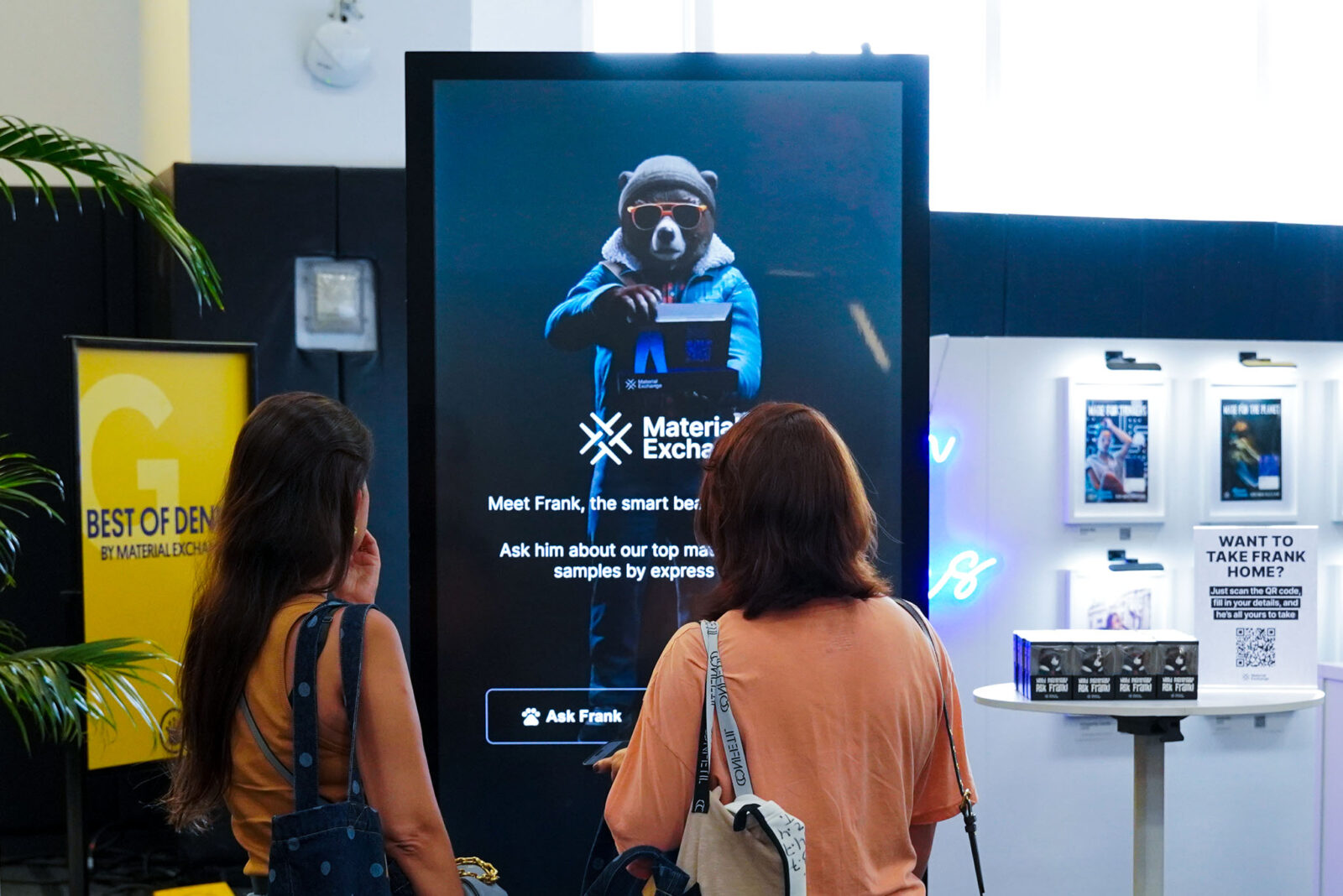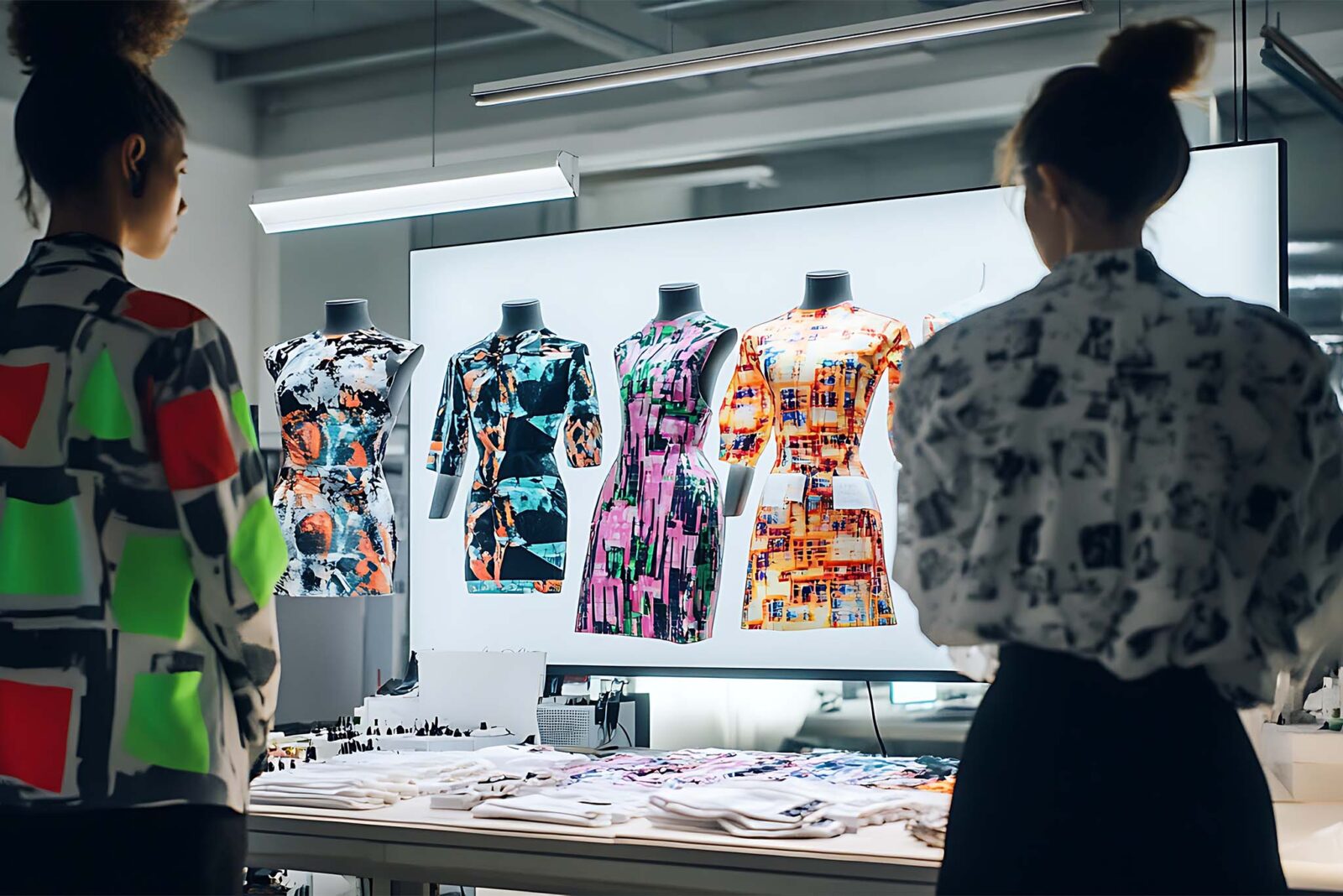The unforeseen impact of AI on the clothes we wear
Artificial intelligence, once relegated to the realm of science fiction, has been woven into the fabric of our everyday lives. Although you may not see it, AI is everywhere, curating your social media feed, helping you navigate traffic on your morning commute, and predicting how you’ll close out that email you’ve been meaning to send. Beyond personalizing and streamlining our daily tasks, AI is revolutionizing the way we conduct business across industries, notably within fashion.

The fashion industry, unlike the ever-accelerating trend cycle, is notoriously slow in adopting new methods and technologies. Thanks to AI, this is changing, from trend forecasting to cost optimization.
In trend forecasting, AI analyzes mass amounts of data from sources including social media, search queries, and e-commerce platforms to identify emerging consumer preferences with speed and accuracy. With this technology, companies can predict trends well in advance, allowing key players, from designers to buyers, the ability to make data-driven decisions.
Fashion has also recently gained its first AI sourcing assistant, our very own Frank, who helps brands search for materials, find in-depth data, and centralize communications. Frank supports both brands and suppliers as they navigate this dynamic industry and create quality products. In short, he’s simplifying sourcing for all involved.

What AI for fashion is doing for the industry’s drive toward sustainability
Not only is artificial intelligence streamlining and advancing trend forecasting and sourcing – it’s also accelerating sustainability in fashion. Through inventory optimization and demand forecasting, AI helps brands align production with actual consumer demand. This significantly reduces longstanding industry issues such as overproduction, excess inventory, and landfill waste. Tools like Google’s Demand Forecasting AI and platforms like Stitch Fix use data-driven models to predict buying patterns, leading to more efficient resource use.
Additionally, AI can enhance supply chain transparency by aggregating and verifying data from multiple tiers of production, enabling brands to monitor labor conditions, emissions, and material flows in real time. These capabilities empower companies within the fashion industry to make responsible choices, reduce waste, and meet growing consumer and regulatory demands for environmental and social accountability.

The pros and cons of AI for fashion
While the benefits of AI in the fashion industry are apparent, it’s important to note that with these wins, there are challenges. Notably, the widespread use of AI requires a significant electricity and water demand. However, AI has the ability to help the fashion industry become more sustainable overall in ways that would otherwise be impossible. For instance, AI can reduce the environmental impacts of the supply chain’s tier 4 by producing crops more efficiently with fewer inputs like water.
What’s more, leading tech giants are working to mitigate the impacts associated with AI use through tools like Google-created DeepMind, an AI that can save the amount of energy it uses to power its data centers. In terms of water, companies are introducing new data center and chip designs that consume less water. As AI adoption accelerates, it is imperative that efforts to reduce and offset its environmental impacts are further explored, implemented, and scaled at both private and governmental levels.

AI is transforming the way we operate, both personally and professionally. The use of AI in the fashion industry is driving significant advancements, from revolutionizing trend forecasting and sourcing to reducing overproduction and improving supply chain transparency. Put simply, AI is enabling more efficient and sustainable practices. However, as is often the case with revolutionary technologies, AI may solve many problems, but not without creating some of its own.
As fashion continues to embrace AI, it is essential for the industry and its technology partners to adopt a balanced approach that prioritizes both innovation and environmental stewardship. Only then can AI truly support a more efficient, ethical, and sustainable future for fashion.
To learn more about fashion’s first AI sourcing assistant, Frank, and how he can help your business stand out from the pack, check out his resume here:
